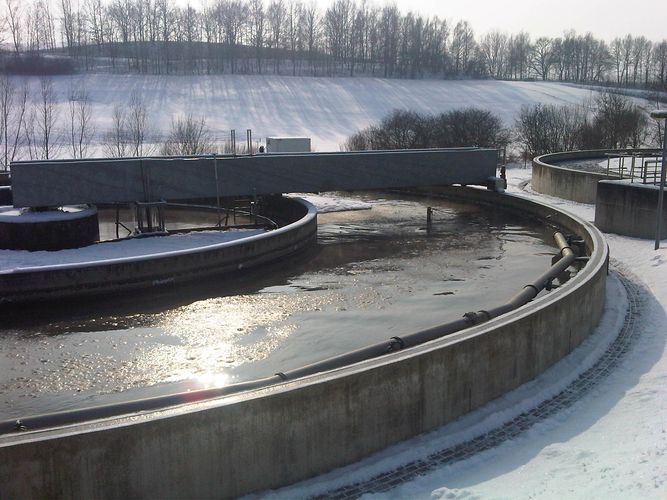Process and energy-optimised activated sludge process with dynamic process controls resulting in maximum elimination rates with minimised operating costs
operational area | usage
- Municipal wastewater treatment in combined wastewater and separate system for population sizes from 500 to 500,000 inhabitants
- For industrial wastewater treatment in combination with magnesium-ammonium-phosphate (MAP) precipitation and anaerobic pretreatment
- In combination with wks dosing technology
- Can be adapted according to plant size, activated sludge separation with secondary settlement tank with horizontal or vertical through-flow, or by means of pressure release flotation
- Can be implemented as a circular/rectangular form, as a compact TRIUNO tank or as a combination basin
Technology | Process
The activated sludge process is optimised for a wastewater treatment plants continuous operation. The type of aeration used (fine bubble pressure aeration or ejector aeration) is dependent on which particular type of wastewater is being treated. For tank circulation, either pulse aeration, horizontal agitators, ejectors or vertical agitations are preferred.
Nitrification and denitrification processes can be implemented either as intermittent, upstream, downstream, simultaneous or in cascade. Alongside the biological process the chemical phosphorous elimination is implemented as simultaneous precipitation or post-precipitation.
The key point of the optimised process is the intelligent, dynamic control system of nitrification and denitrification depending on the inflow and load of the wastewater, the plant thus always operates at optimum rate and energy efficiency.
The separation of the activated sludge/clean water mixture occurs by means of gravity sedimentation in the secondary sedimentation tank or in case of poor settling properties, by means of pressure release flotation.
Process Engineering Components
- Process-relevant equipment for aeration, circulation, secondary sedimentation and flotation
- Automation technology incl. RBS activation control module for optimisation of the nitrification, denitrification and phosphorous elimination process
- Intelligent networking of the individual process engineering steps
benefits
- By using the RBS activated sludge control system the plant operates at all times at the optimum process rate and economically
- Maximum possible nitrogen elimination with optimised operating costs and energy efficiency
- Largely biological and chemical phosphorous elimination

